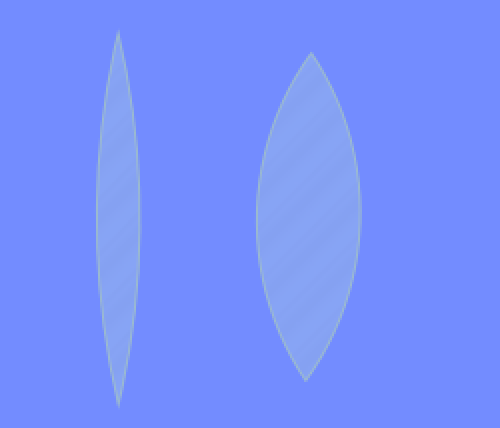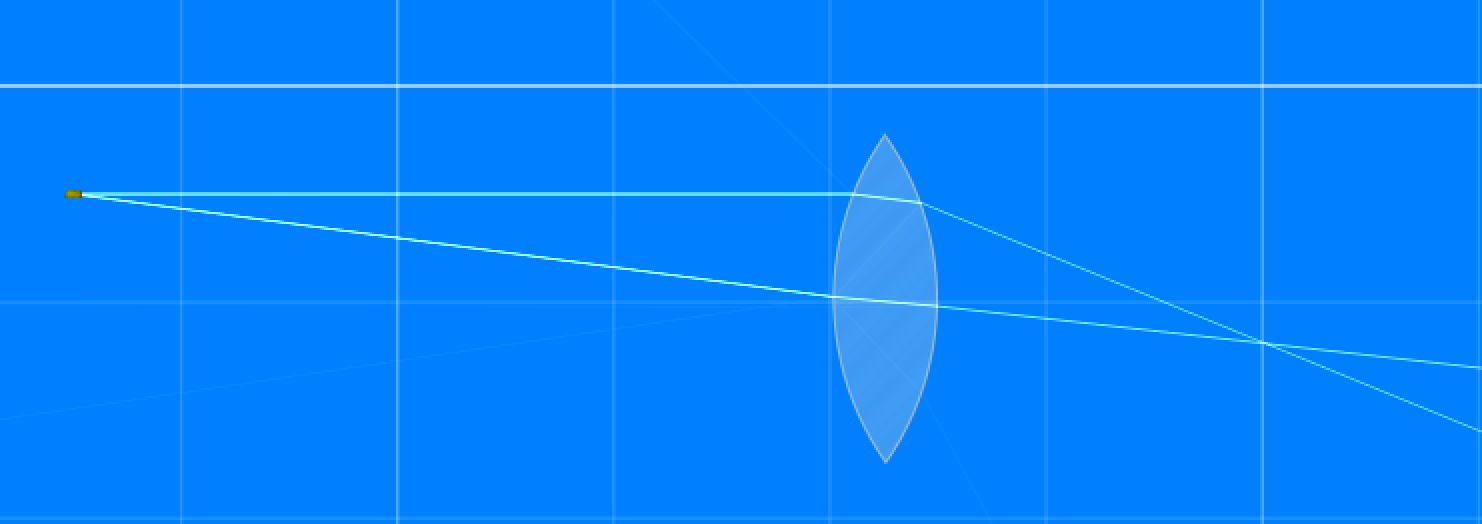Activity: Lenses

This activity will throw you right into Optics by introducing convex and concave lenses. You'll have the chance to use Algodoo to simulate refraction and, more broadly, construct ray diagrams for thin lenses. The lens formula is also provided.
In Algodoo if you make an object transparent and shine a laser on it the light will reflect and refract according to physical laws.
- What is the law that relates the angle of refraction and incidence?
Point objects
A point object reflects light in all directions but we are only interested in the rays that pass through the lens so don't have to draw a million rays.
- Make a point source by putting lasers on top of each other at different angles. In the image below the angle between the rays in 1°, you may like to use less. To keep them together you can group them. This function is in "appearance".

Distant object
As you move away from a point object the angle between rays that pass through a lens becomes smaller and smaller. If the object is a long way away we can assume the rays are parallel. If an infinite distance away then they are parallel.
- Make a set of parallel rays to represent an object at infinity.
Making lenses
Here's an animation of how to make the shape, all you have to do then is change it to glass.
You can work out how to make a convex lens yourself.
- Observe the way that the image position changes as you vary the position of the object for each lens.
- Try making lenses using different sized circles and observe the way they refract the light rays.
- Which lens bends the light most, the one made from big circles or the one made from small circles?
Parallel rays of light cross over at the principal focus, the distance between the lens and this point is the focal length (f).
- Which of these two lenses would have the longest focal length?

The concave lens doesn't really have a focal point since the rays diverge, however the rays would meet if we traced them back on the side of the object. We call this a virtual point.

Using an optical bench project an image of an illuminated object onto a screen with a convex lens.
- Check that the lens equation holds true.


